More From the Los Angeles Times
-
-
-
-
Nov. 3, 2024
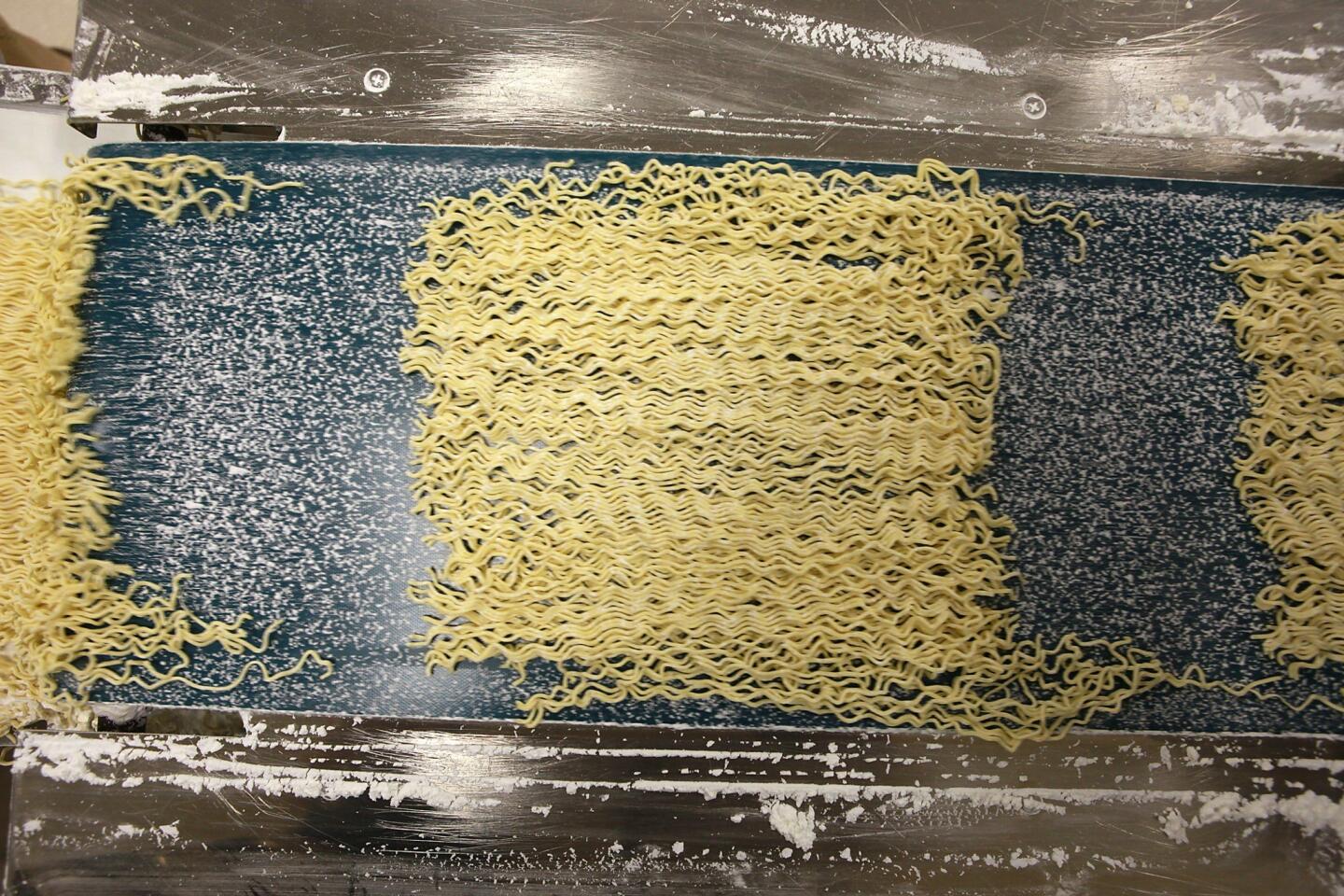
Freshly cut ramen noodles move along a conveyor belt. One noodle type made for a restaurant in Texas is called TS24W. The TS stands for tokusen, which means “specially selected.” The 24 indicates that 24 noodles are cut from a width of 3 centimeters of dough. The W means the noodles are wavy. (Brian van der Brug / Los Angeles Times)
A look inside the Sun Noodle factory, where much of the region’s ramen is made.
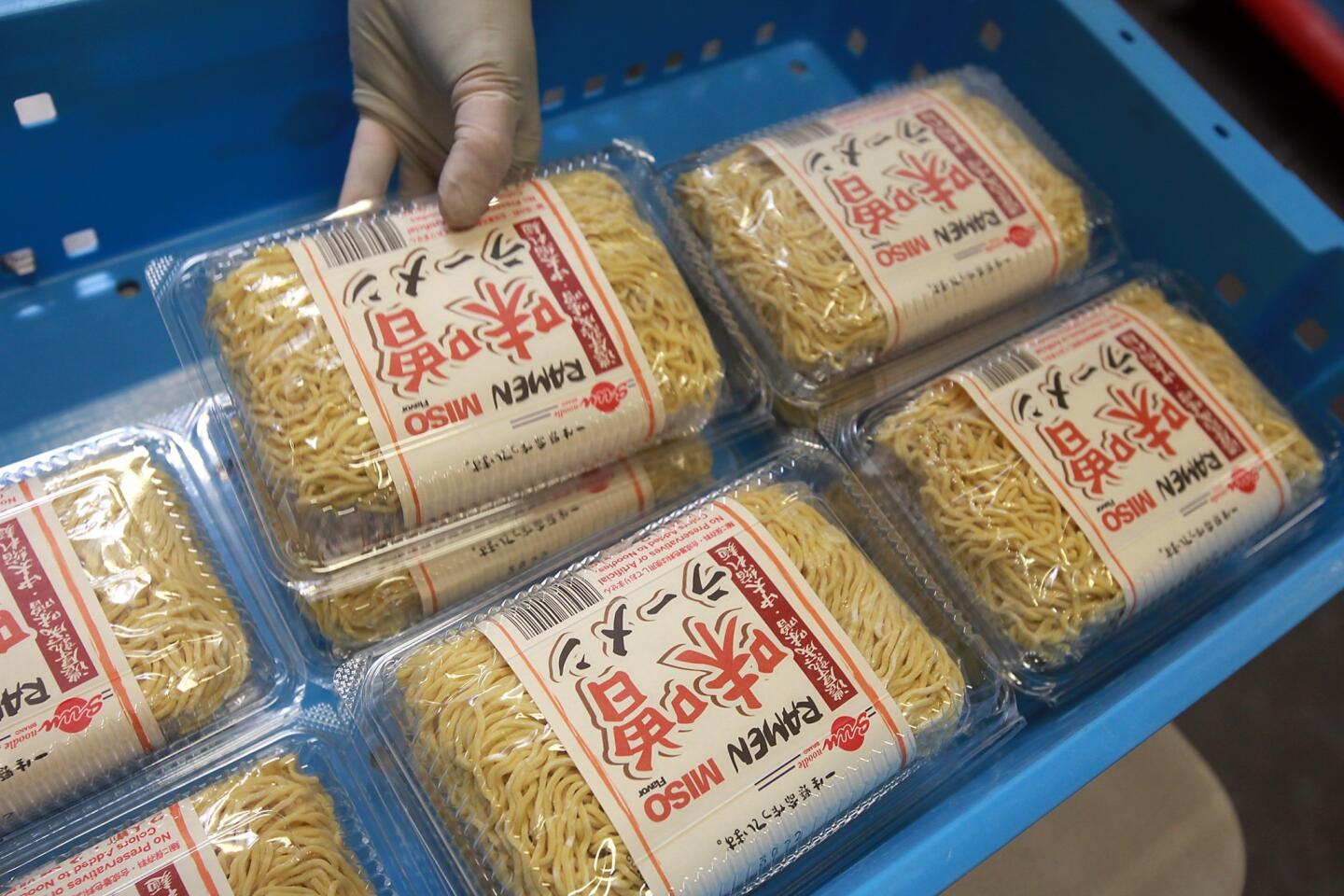
Freshly packaged ramen noodles are stacked for distribution at the Sun Noodle factory in Compton. (Brian van der Brug / Los Angeles Times)
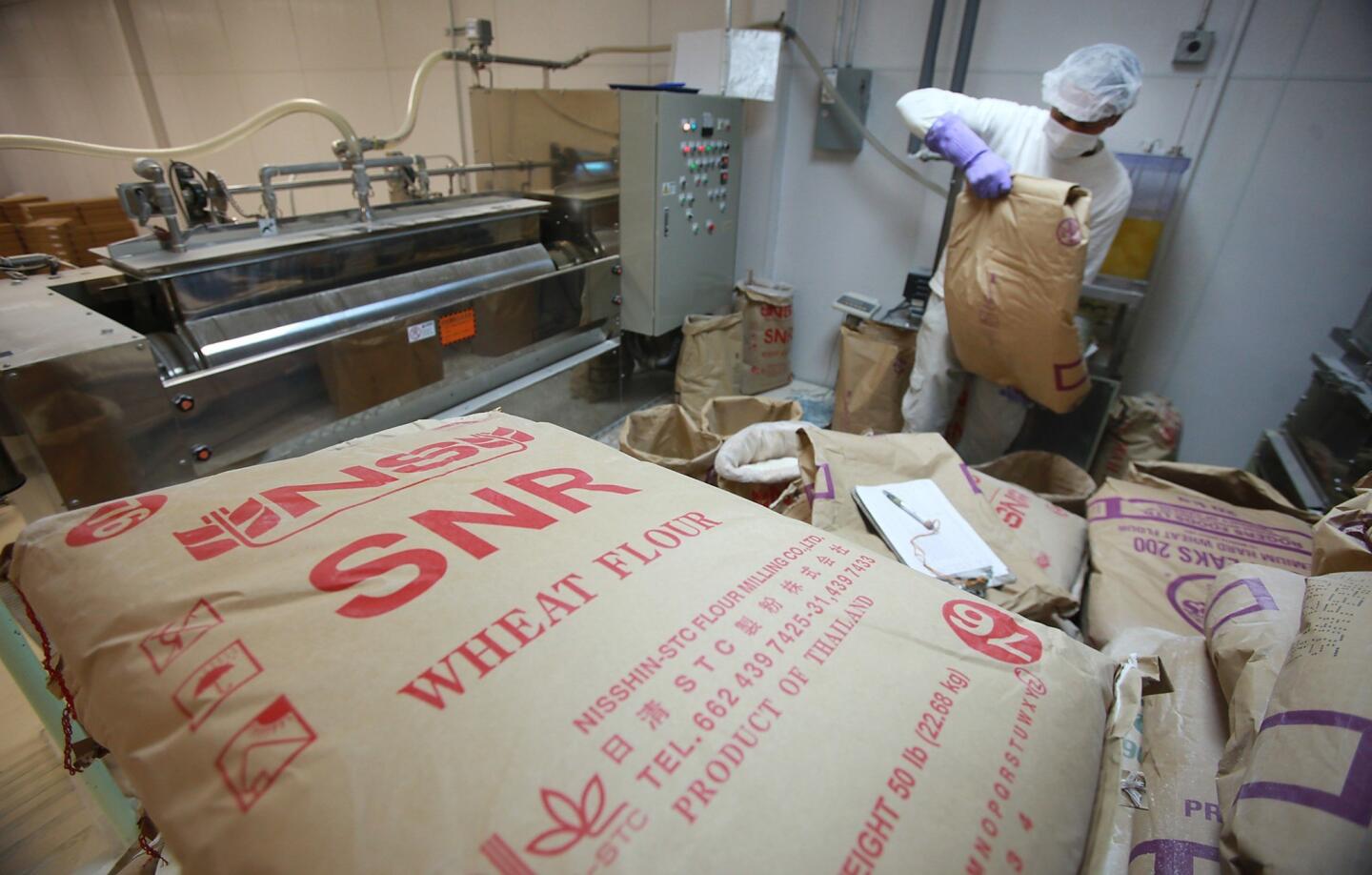
A worker opens bags of wheat flour inside the Sun Noodle plant. (Brian van der Brug / Los Angeles Times)
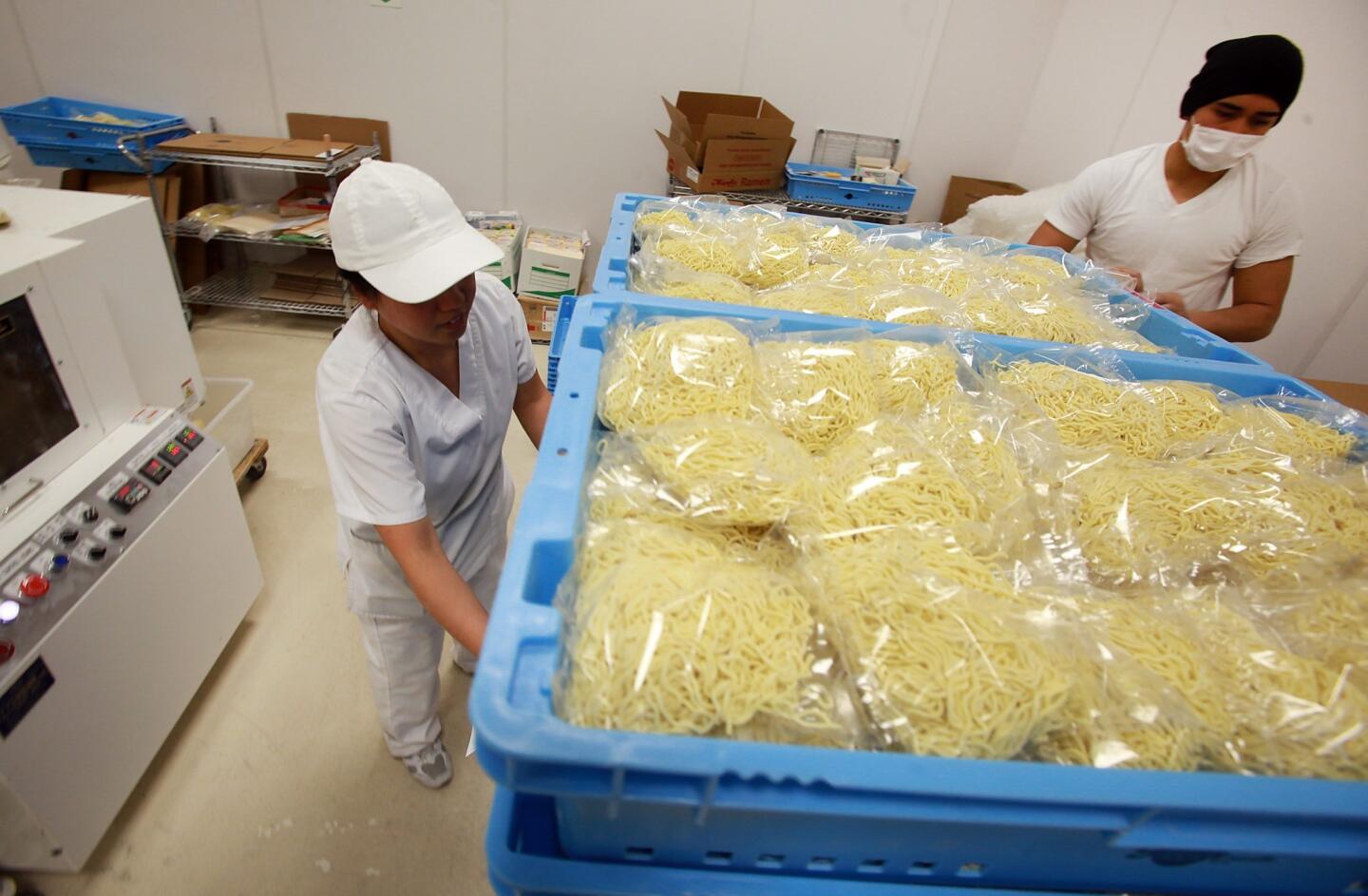
Freshly packaged ramen noodles are stacked for distribution. Restaurants will have very specific orders for types of noodles: curly or straight, long or short, thick or thin, and more. (Brian van der Brug / Los Angeles Times)
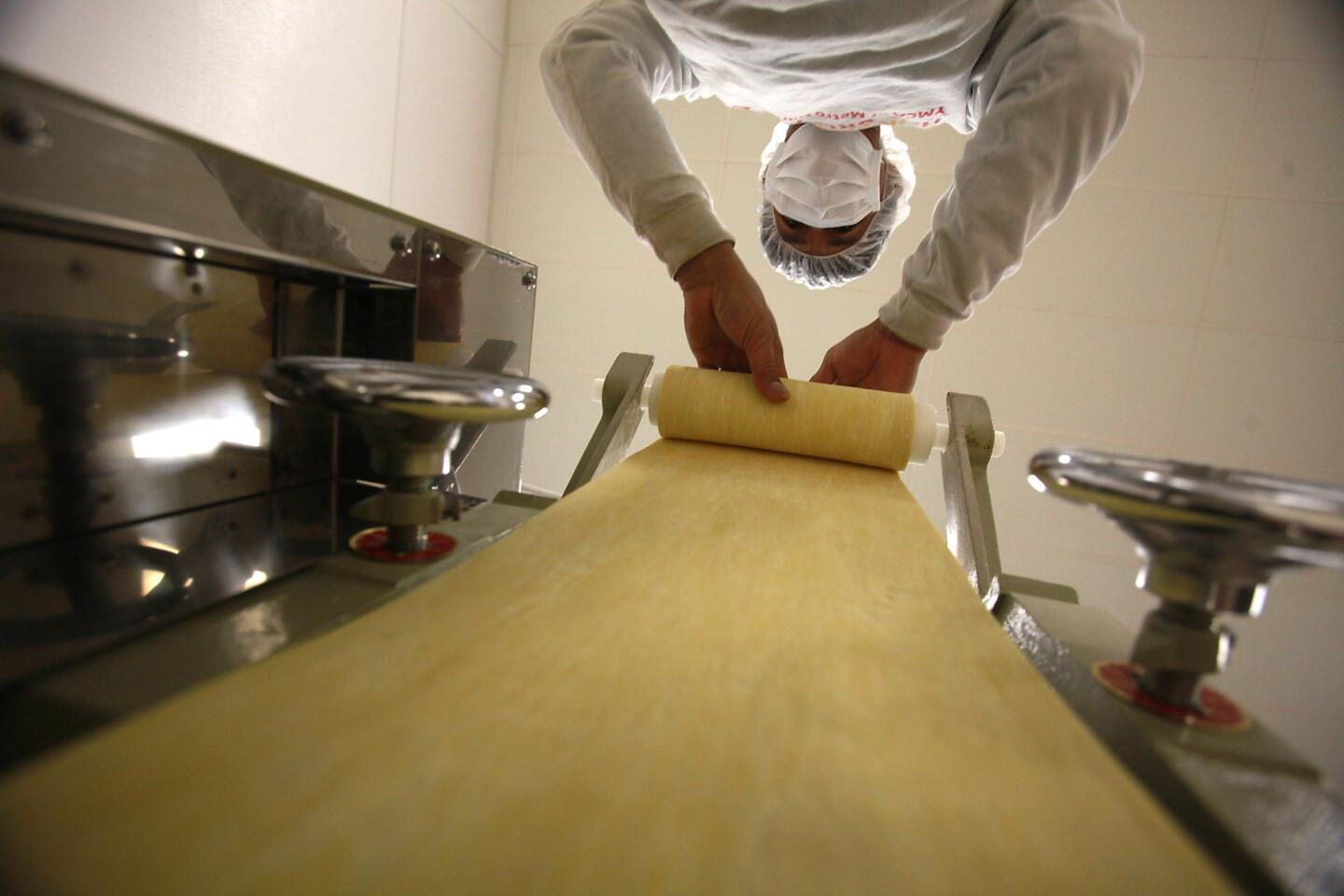
A worker loads fresh dough into a machine that rolls, presses and cuts the dough into ramen. (Brian van der Brug / Los Angeles Times)
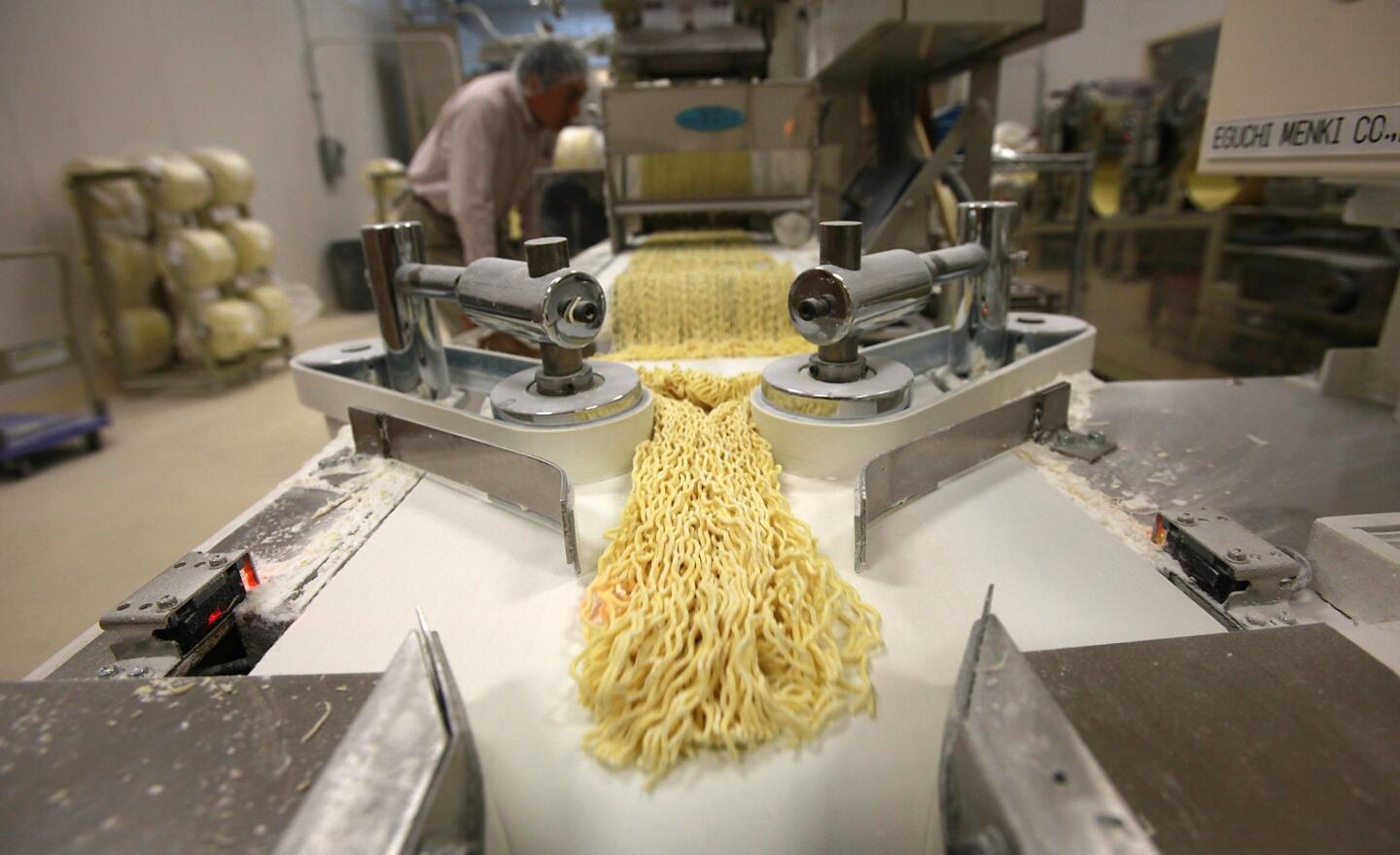
Fresh-cut ramen moves along a conveyor belt inside the Sun Noodle factory. (Brian van der Brug / Los Angeles Times)
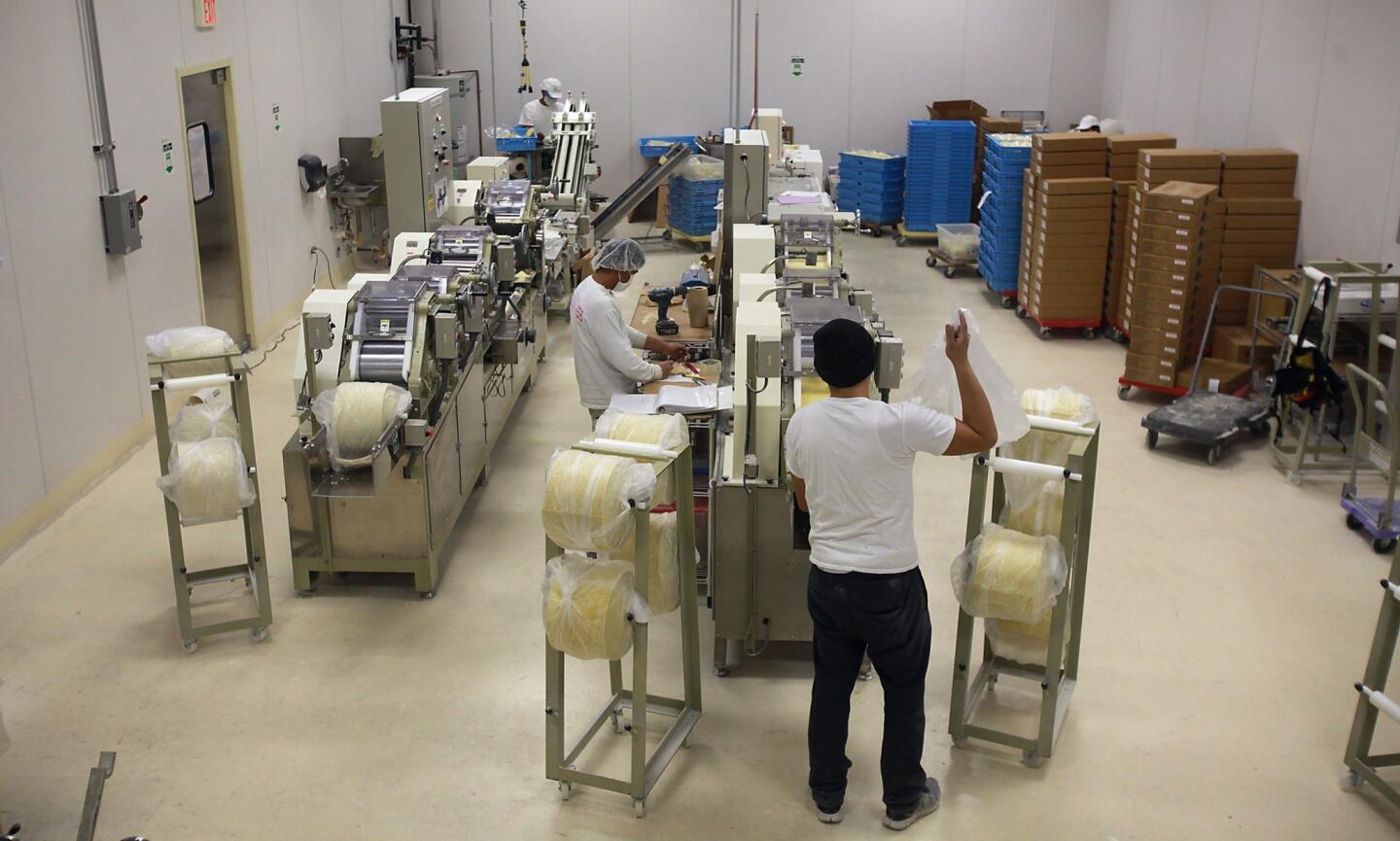
Workers transform dough into ramen inside the Sun Noodle factory. Chefs will consult with Sun Noodle over several meetings and taste tests to get precisely the noodle they’re seeking. Aspects such as springiness and chew are considered carefully. (Brian van der Brug / Los Angeles Times)
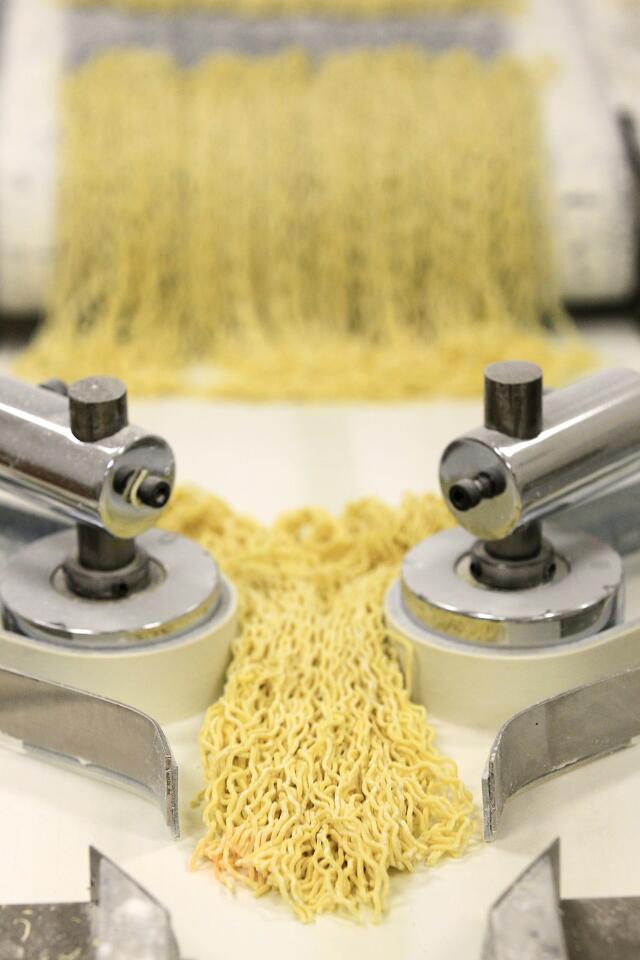
Sun Noodle’s ramen is sold from Canada to South America. “Ramen is getting big in South America,” says Vice President Keisuke Sawakawa. (Brian van der Brug / Los Angeles Times)
Nov. 3, 2024